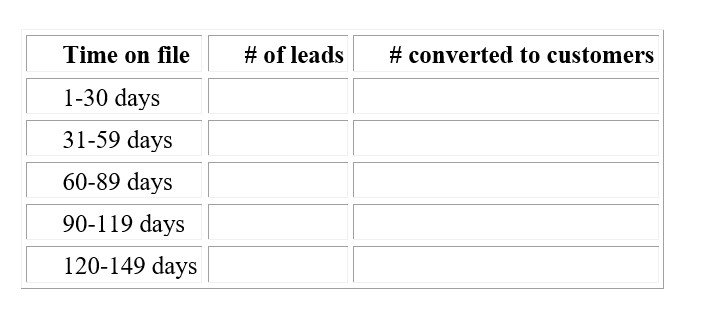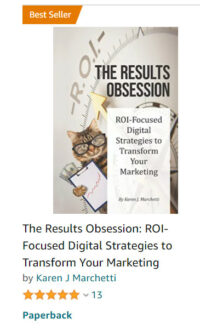Don’t limit your messaging by assuming too much
Do you assume that your leads read everything on your website – or everything in the piece of content you sent them? You may be missing MAJOR opportunities to fortify your key selling points.
- Don’t assume your leads read the entire document you offered (or watched the entire webinar), understood your key points, or remembered what they read or watched – summarize the key points for them, or focus on one key benefit or capability in each email.
- Never assume they know how your product or service works, why certain features are important, or the benefits you deliver. For leads actively searching for a solution, they may have visited multiple websites – and likely don’t remember all the benefits of your offering. Show your leads how wonderful life/work could be with your product.
- Don’t assume visitors to your website understood the “why should I buy yours” message (or remember it). Too many websites (and emails) have this point buried. Make sure every lead understands your key points of differentiation in every email.
Your emails should tell prospects something they didn’t know. In many cases, you can summarize some of your existing web Content.
But it’s important to remember – your prospects are not you. They don’t read everything on your website or everything you send them. Help them recall your fabulous benefits in every email.
Don’t give up too soon – and communicate frequently at the beginning
Is the length of your email series long enough to maximize the value of each lead?
The average length of your sales cycle is how long you should follow up with leads.
The “3 C’s” play a role: How Complex a sale it is, how much you’re Changing the customer’s current way of doing things, and how Costly your product/service all affect this timeframe.
For longer sales cycles, many companies (i.e., sales reps) stop following up on leads way too soon. With an email series, you can continue to follow up, even after your sales reps have stopped.
No matter how long your sales cycle, a percentage of those who responded to one of your Offers will end up buying from someone. So it’s smart to keep in contact until: you actually get the sale, they tell you they’ve purchased elsewhere, or you have no response to your last three emails.
How long does it take you to convert the average lead?
For an ecommerce client (where none of the “3 C’s” apply), we discovered that virtually no sales were made to prospects 90 days after the date they became a lead.
So we stepped up our efforts to convert prospects to customers in the first 90 days.
It’s important to keep track of your own results by “time on file” (in your database or CRM), as every company’s results will be different. (Capture the original date the lead came on your file, and the date of first purchase.) Keep a running count like this (although you may want to modify your “time on file” categories to reflect your own average conversion timeframe):

How often should you contact your leads? It’s something to test.
- The most critical time is immediately after the individual responds to one of your Offers.
- Once a week may be a reasonable timeframe for contacting the actively-searching potential buyer – but test to find out. (A once-a-month enewsletter is absolutely not frequent enough)
How many emails should be included in your Lead Series? Enough messages to cover the key topics that will get the prospect to take the next step in the Sales Process.
It’s also true that you want to avoid having your leads unsubscribe. Be sure to send valuable Content to educate and help them – so they see the value of remaining on your email list.
Improve response from individual recipients
Are your email lead conversion messages doing “okay” – but not great? You might identify some new winning directions by looking at results by individual name. You might find these groups:
1. Those who never click: Identify leads that haven’t clicked on your last three emails.
To re-engage these names, it’s time to try something different!
Start with the Subject Line:
- If your past Subject Lines have been promotional, consider testing more educational ones. If you’ve been using educational Subject Lines, change the topic or pitch a useful Offer. Consider a fact-based or news-related Subject Line.
- Consider a “Most Read Posts (on Topic)” Subject Line.
- Ecommerce: Introduce new products or services, best sellers, highest-rated products or services (if you haven’t been doing that)
- Consider sending your latest testimonials (“see what customers say”.) And link to a page of testimonials on your website.
- Introduce a case study
AFTER you’ve tested new Subject Lines, move on to additional testing of the Offer, message, message format, and message length:
- Test different next-step Offers
- Test different message formats. If you’re sending enewsletters or emails with images, try a more personal message. If you’ve tried personal or educational approaches, change up the topic.
- Test message length: if you’ve been sending longer emails, try shorter ones with bullet points. If your emails tend to be “short on meat,” include more specific details for more value.
- If your enewsletter includes multiple topics, consider a simpler one article “tip of the week” or a summary of a single blog post. (Many companies find that interest in articles beyond the first two drops dramatically. That’s a clear sign you’re including too many topics in your enewsletter.)
The point is to change things up in your emails and enewsletters, to find topics your leads are interested in.
2. Ecommerce leads who clicked but didn’t buy
- If your original email didn’t include a special Offer, consider sending a follow-up email with an Offer to motivate the sale
- Promote similar products to what they previously clicked, or show how products work together
- Go into more detail about the unique benefits of the products they’ve clicked on previously
- Send customer testimonials (“what customers say”) – especially about products they’ve previously clicked on
3. Leads who regularly click – but haven’t taken the next step
Those names are actively seeking information or a solution. They have the highest probability of making a first purchase.
Have Sales follow up to these regular clickers. Or send them a more personal email “letter” to offer personalized help in finding the right option.
Excerpted from our new Amazon BESTSELLER, “The Results Obsession: ROI-Focused Digital Strategies to Transform Your Marketing” !

Learn more about The Results Obsession and see the Table of Contents
The book includes 3 copywriting chapters, plus High Impact Email Strategies, Creating Email to Drive Leads and Sales, and step-by-step tracking and analytics to ensure you maximize your email results.


Leave A Comment